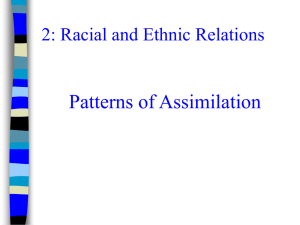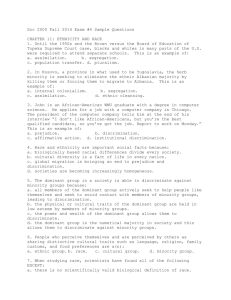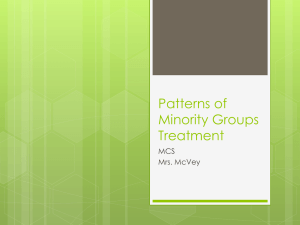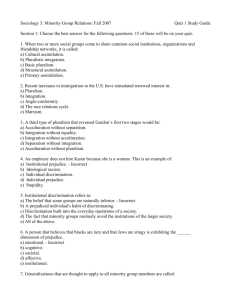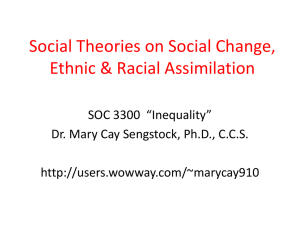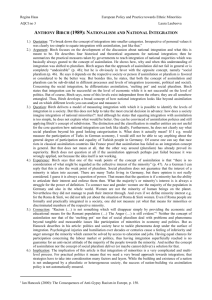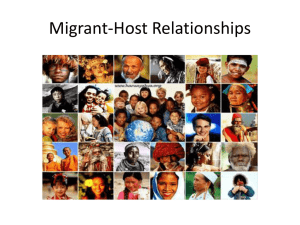Lesson 9-2: Racial and Ethnic Relations
advertisement
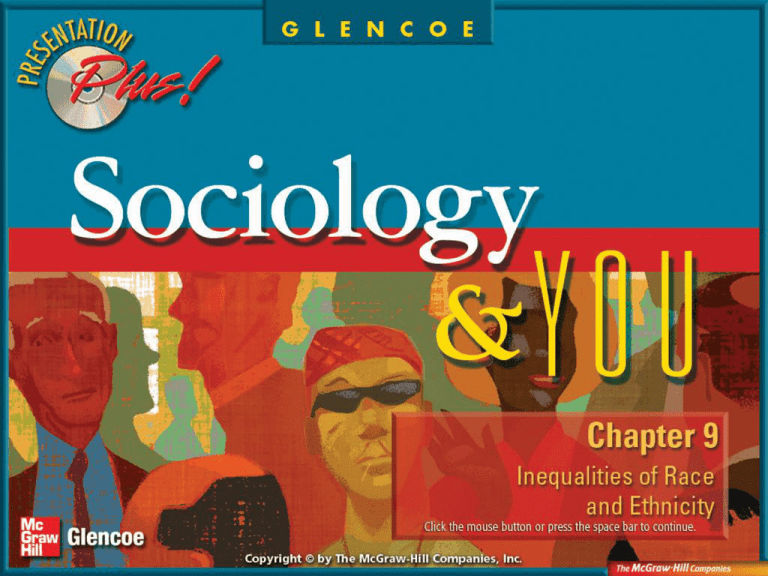
Chapter Preview · Section 2 Racial and Ethnic Relations (pages 280–283) Patterns of racial and ethnic relations take two forms: assimilation and conflict. Patterns of assimilation include Anglo-conformity, melting pot, and cultural pluralism. Conflict patterns include genocide, population transfer, and subjugation. • assimilation • cultural pluralism • genocide • subjugation • de jure segregation • de facto segregation Are there positive and negative effects of different races and ethnicities living together? A. Yes B. No C. Sometimes D. Not at all 0% A A. B. C. 0% D. B A B C 0% D C 0% D Patterns of Assimilation • Assimilation refers to the blending or fusing of minority groups into the dominant society. Patterns of Assimilation (cont.) • Different forms of assimilation: – Anglo-conformity—immigrants are accepted as long as they conform; the most common pattern of assimilation in America. – Melting pot/tossed salad—all ethnic and racial minorities voluntarily blend together. Patterns of Assimilation (cont.) – Cultural pluralism—immigrants maintain some of their “old” ways, which can result in introducing some of their culture to the United States. – Accommodation—a minority maintains its own culturally-unique way of life. Which method of assimilation do you think is best and why do you think this? A. Anglo-conformity B. Melting pot C. Cultural pluralism D. Accommodation 0% A A. B. C. 0% D. B A B C 0% D C 0% D Patterns of Conflict • Different forms of conflict: – Genocide—the systematic effort to destroy an entire population. – Population transfer—a minority is forced either to move to a remote location or to leave entirely the territory controlled by the majority. Impact of the Holocaust Patterns of Conflict (cont.) – Subjugation—the minority is denied equal access to the culture and lifestyle of the larger society; the most common pattern of conflict. – De jure segregation—subjugation based on the law. Patterns of Conflict (cont.) – De facto segregation—a situation of segregation that exists regardless of what the law is. Which of the following is the most common form of conflict? A. Genocide B. Subjugation C. de jure segregation D. de facto segregation 0% A A. B. C. 0% D. B A B C 0% D C 0% D • Rank these terms by degree of hostility or control each term indicates is exerted on the minority group: – – – – – – – – Subjugation Assimilation De jure segregation De facto segregation Genocide Cultural pluralism Accommodation Population transfer Impact of the Holocaust assimilation the blending or fusing of minority groups into the dominant society cultural pluralism desire of a group to maintain some sense of identity separate from the dominant group genocide the systematic effort to destroy an entire population subjugation process by which a minority group is denied equal access to the benefits of a society de jure segregation denial of equal access based on the law de facto segregation denial of equal access based on everyday practice
